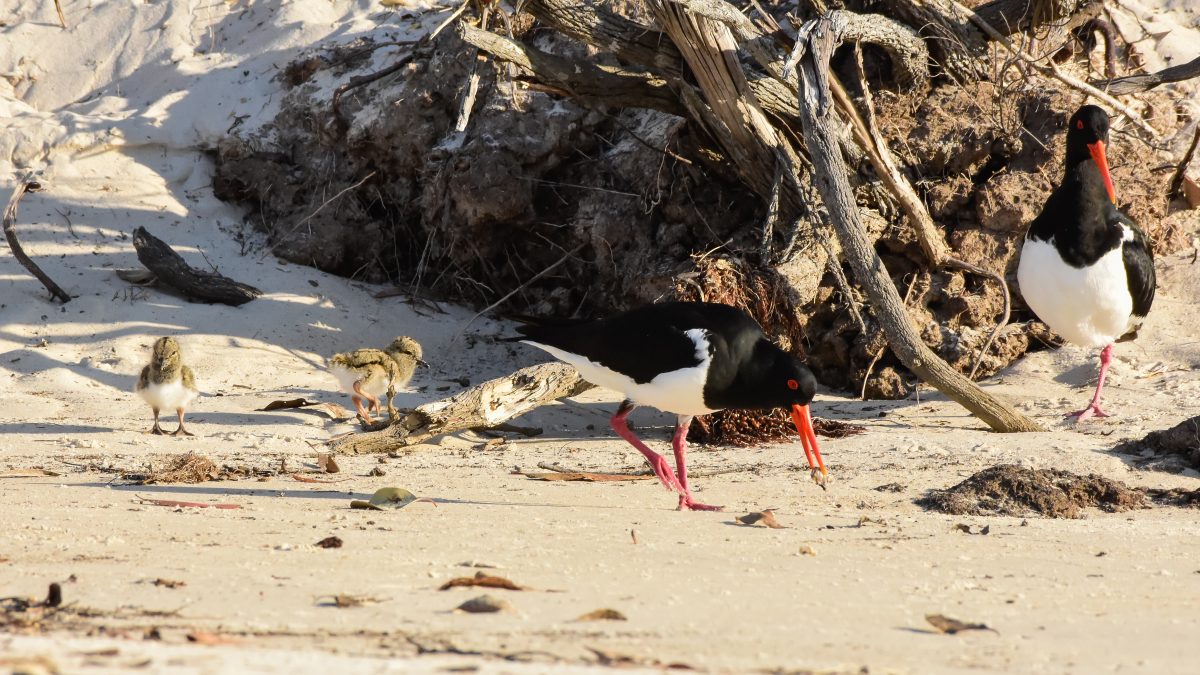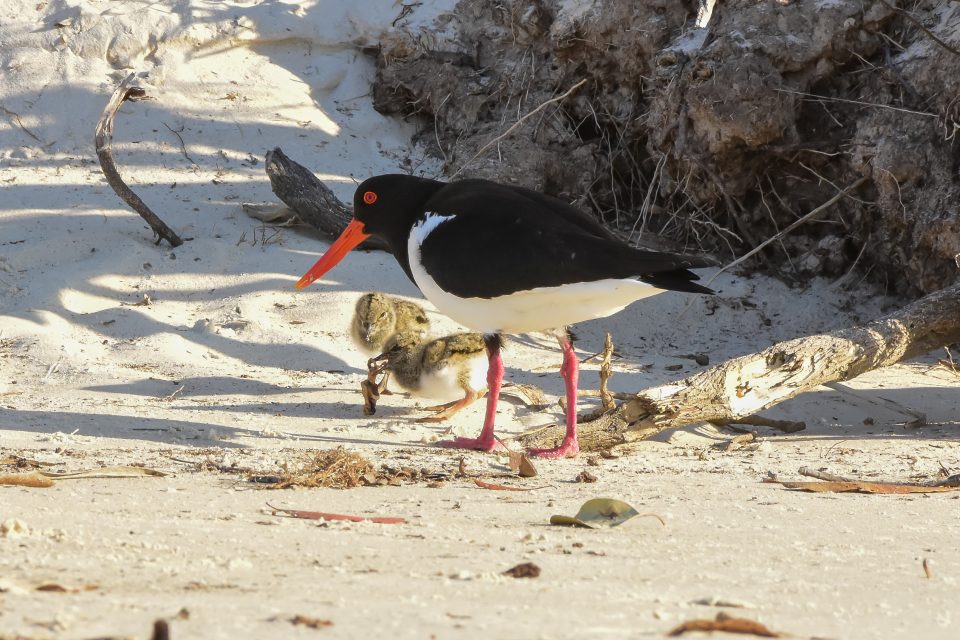
The Jervis Bay chicks were the first to be found this breeding season. Photos: Chris Grounds.
With long red beaks and black-and-white feathers, these birds might catch your eye, but people are being told to stay away.
The birds, called pied oystercatchers, are using beaches up and down the NSW coast to breed their small, light–coloured chicks.
New South Wales National Parks and Wildlife Service (NPWS) Shorebird Ranger Anna Mueller said it was a September surprise for volunteers to find one-day-old chicks earlier this month in the Jervis Bay area.
“This pair of pied oystercatchers, they had two eggs and then we have found the two chicks, which is very exciting,” she said.



The two chicks also won an unofficial prize, as they were the first to be found on the South Coast for this breeding season.
“I have around 80 volunteers around the Shoalhaven area who monitor beaches, and we especially look out for pied oystercatchers and hooded plovers at this time of year,” Ms Mueller said.
“They don’t usually start nesting until mid or end of August, but this pair nested right at the beginning of August, so that meant they were the earliest ones to have eggs, and then chicks.”
The species is one of four shorebird species that fall under the NPWS’ South Coast Shorebirds Recovery Program.
“There’s the hooded plover, the pied oystercatcher, the little tern and the sooty oystercatchers,” she said.
“The pied oystercatchers and the little terns are endangered, and the hooded plovers are critically endangered.”
Ms Mueller said the pied oystercatchers, similar to other shorebirds, faced several threats.
“Any disturbance disturbs the birds,” she said.
“The biggest challenge for them is that they’re relying on the beach to nest, and everyone likes to go to the beach.
“It’s easy to share the shoreline, and there are simple things people can do to help the survival of threatened species.”
The birds face a variety of threats the volunteers manage as best they can, she said.
“There’s a chance the birds could walk away from the nest and not return, if they’re disturbed too much,” she said.
“When we see birds start to nest, we fence it off to keep them safe from being trampled over by humans or dogs.
“There’s also other, natural threats – we’ve had floods wash nests away, or big tides coming in where we couldn’t protect the nests with sandbags.
“Predators such as foxes and ravens also play a big threat to the birds and their survival, as well.”
Ms Mueller said she and her volunteers were looking forward to seeing the pied oystercatchers’ breeding season continue.
“The season’s in full swing now, we’re in September, so more chicks are starting to appear all over the beaches,” she said.
“It’s always nice to see the birds – and the chicks are always cute – but it’s special to see an endangered species having chicks.”
Ms Mueller said residents in and around Jervis Bay were fans of the birds.
“A lot of people in the community appreciate the birds and appreciate seeing the chicks,” she said.
“It’s such a special thing to have the birds nesting on our local beaches, and the South Coast community definitely gets behind it.
“For us, it’s nice to see people engaged and wanting to learn more about the birds, but we ask for caution.”









